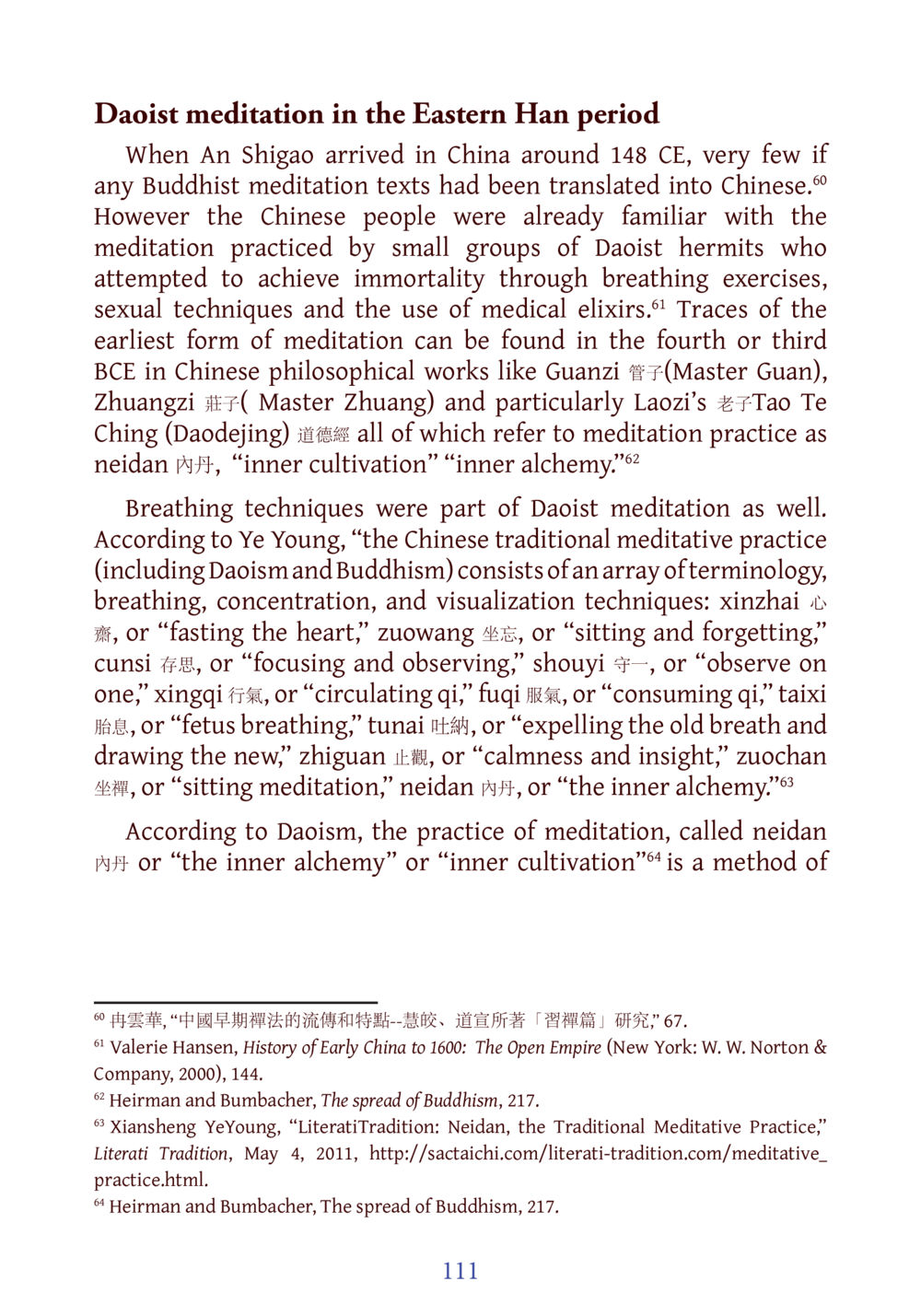Daoist Meditation in the Eastern Han Period : หน้า 132/141
DIRI Journal : หน้า 132/141 Exploring the origins and practices of Daoist meditation during the Eastern Han era, focusing on breathing techniques and inner cultivation methods.
0 ครั้ง

สรุปเนื้อหา
In the Eastern Han period around 148 CE, Daoist meditation practices already existed, with references found in ancient texts like the Tao Te Ching. Practitioners sought immortality through various techniques such as breathing exercises and inner alchemy, known as neidan. These methods included xinzhi, zuowang, and shouyi, which formed a rich tapestry of meditative practices that emphasized concentration and visualization. Daoism's unique approach to meditation reflects its philosophical underpinnings and the quest for self-cultivation and harmony. For more details, visit dmc.tv.
หัวข้อประเด็น
- Daoist meditation history
- Breathing techniques in Daoism
- Inner alchemy (neidan)
- Influence of ancient texts
- Meditation practices in Eastern Han
ข้อความต้นฉบับในหน้า
Daoist meditation in the Eastern Han period
When An Shigao arrived in China around 148 CE, very few if any Buddhist meditation texts had been translated into Chinese.60 However the Chinese people were already familiar with the meditation practiced by small groups of Daoist hermits who attempted to achieve immortality through breathing exercises, sexual techniques and the use of medical elixirs.61 Traces of the earliest form of meditation can be found in the fourth or third BCE in Chinese philosophical works like Guanzi 管子(Master Guan), Zhuangzi 莊子( Master Zhuang) and particularly Laozi’s 老子Tao Te Ching (Daodejing) all of which refer to meditation practice as neidan 内丹, “inner cultivation”“inner alchemy.”62
Breathing techniques were part of Daoist meditation as well. According to Ye Young, “the Chinese traditional meditative practice (including Daoism and Buddhism) consists of an array of terminology, breathing, concentration, and visualization techniques: xinzhi 心齊, or “fasting the heart,” zuowang 坐忘, or “sitting and forgetting,” cunsi 存思, or “focusing and observing,” shouyi 守一, or “observe on one,” xingqi 行氣, or “circulating qi,” fuqi 服氣, or “consuming qi,” taixi 胎息, or “fetus breathing,” tunai 吐納, or “expelling the old breath and drawing the new,” zhiguan 止觀, or “calmness and insight,” zuochan 坐禪, or “sitting meditation,” neidan 内丹, or “the inner alchemy.”63
According to Daoism, the practice of meditation, called neidan 内丹 or “the inner alchemy” or “inner cultivation”64 is a method of
หน้าหนังสือทั้งหมด

1

2

3

4

5

6

7

8

9

10

11

12

13

14

15

16

17

18

19

20

21

22

23

24

25

26

27

28

29

30

31

32

33

34

35

36

37

38

39

40

41

42

43

44

45

46

47

48

49

50

51

52

53

54

55

56

57

58

59

60

61

62

63

64

65

66

67

68

69

70

71

72

73

74

75

76

77

78

79

80

81

82

83

84

85

86

87

88

89

90

91

92

93

94

95

96

97

98

99

100

101

102

103

104

105

106

107

108

109

110

111

112

113

114

115

116

117

118

119

120

121

122

123

124

125

126

127

128

129

130

131

132

133

134

135

136

137

138

139

140

141
หนังสือที่เกี่ยวข้อง
Load More
